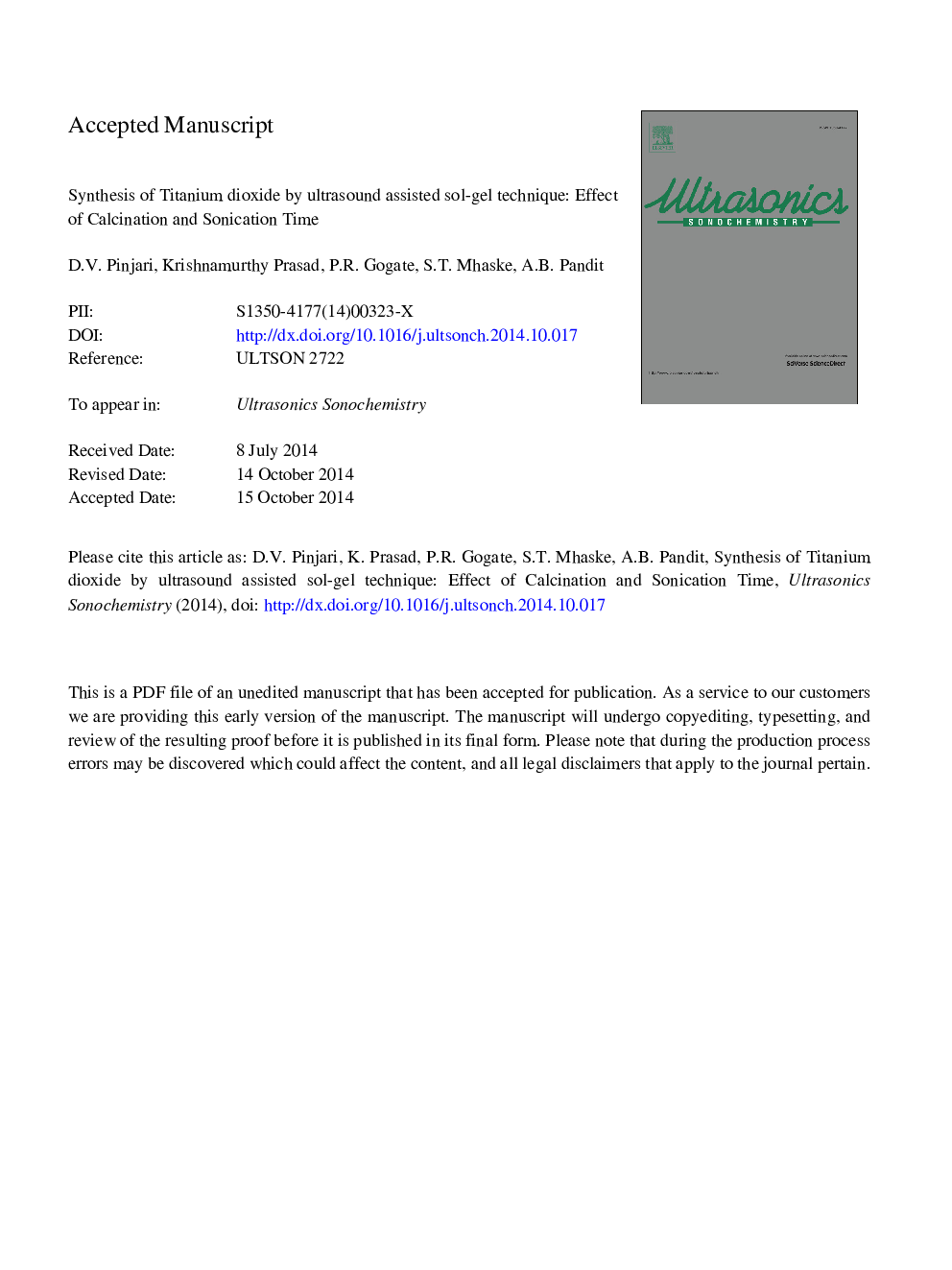| Article ID | Journal | Published Year | Pages | File Type |
|---|---|---|---|---|
| 7704018 | Ultrasonics Sonochemistry | 2015 | 25 Pages |
Abstract
Nanostructured titanium dioxide has been synthesized using both conventional and ultrasound assisted sol-gel technique with an objective of understanding the role of cavitational effects in the synthesis process. The experiments were conducted at a constant calcination temperature of 750 °C and the calcination time was varied from 30 min to 3 h to study the effect of calcination time on the properties of the synthesized TiO2. The TiO2 specimens were characterized using X-ray diffraction (XRD) and scanning electron microscopy (SEM). The influence of the sonication time on the phase transformation process from anatase to rutile and also on the crystallite size and percentage crystallinity of the synthesized TiO2 has also been investigated. It was observed that 100% phase transformation occurred after 3 h of calcination for the ultrasound assisted sol-gel synthesized TiO2. The study on the phase transformation via variation of sonication time yielded interesting results. It was observed that as the sonication time increased, an initial increase in the rutile content is obtained and beyond optimum sonication time, the rutile content decreased. In general, the ultrasound assisted process results in synthesis of TiO2 material with higher rutile content as compared to the conventional sol-gel process.
Related Topics
Physical Sciences and Engineering
Chemistry
Chemistry (General)
Authors
D.V. Pinjari, Krishnamurthy Prasad, P.R. Gogate, S.T. Mhaske, A.B. Pandit,
